The Ministry of Defence has outlined its current staffing levels and projections for the next year, highlighting ongoing efforts to maintain an efficient and affordable workforce aligned with departmental priorities.
In response to a parliamentary question from Tanmanjeet Singh Dhesi, MP for Slough, the MOD confirmed that as of 1 October 2024, the department employed 56,800 full-time equivalent (FTE) civilian personnel. This figure includes staff within the MOD’s main Top Level Budgets, Executive Agencies, and the Royal Fleet Auxiliary, but excludes locally engaged civilians.
Al Carns, Parliamentary Under-Secretary for Defence, provided the details, stating:
“We are working to ensure our workforce remains affordable and targeted at delivering the Department’s priorities and are committed to achieving a more efficient and effective civil service.”
The MOD forecasts a reduction in civilian personnel, estimating a workforce of 55,430 FTE by 1 April 2025. This projection is based on assumptions informed by historical staff turnover and current recruitment plans. Carns clarified that this figure is not a target but an indicative number used for planning purposes.
“This figure represents only one part of MOD’s workforce, and the actual figure may be impacted by changes to the size and shape of other workforce types including military staff, reservists and contractors,” he noted.
For non-departmental public bodies (NDPBs) sponsored by the MOD, staffing levels and human resources policies are delegated to the organisations themselves, and information is not held centrally by the MOD.
The staffing forecast reflects the MOD’s broader commitment to achieving efficiency while delivering its strategic objectives. However, changes in recruitment, outflow rates, or the broader structure of the defence workforce could impact the final figures.



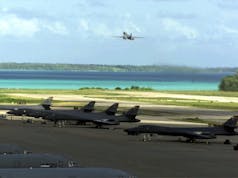
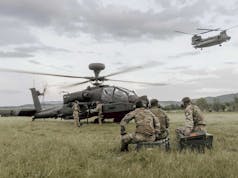

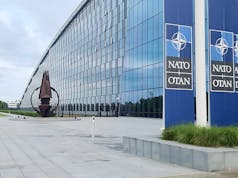
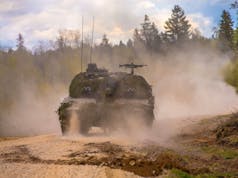

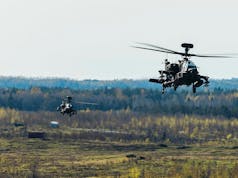

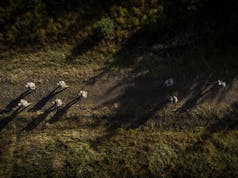


56,800 for the smallest army, air force and navy the UK has ever had. Effectively no changes of any note for over ten years. The MOD badly needs looking at.
Ahh, Geoff, I have tried to cover this old chestnut before. It is not so easy, given the diverse range of functions MoD cover to support the services.
What areas would you look at? Shrinkage of the 3 services with defence cuts does not automatically follow that the MoD org that underpins and supports the military is also cut.
It does not work like that.
I know you have my friend, but being a businessman I still can’t get used to the idea that cutting the frontline whilst leaving support alone makes sense. As you know I have had all sorts of problems with my businesses due to Covid. Staff have had to go, but mostly because of retirement or choice thank goodness, but of those remaining I have cut twenty per cent and fifty per cent respectively I know we are tiny in comparison but surely the same principals apply.
Define front line Geoff. MoD Plod? PSAOs and other PS (both former Regs) attached to the Army Reserve Centres that coach Army Reserves? RFA? And Navy and Airforce also have reserve units that will have equivalent PS attached
Multiple thousands just in the above, where would you cut, especially when the Reserves need growing and the RFA is at its nadir?
Just the above will take you to over half the CS workforce, does that put it into perspective? Instead, perhaps try cutting the officer corps engaged in the LGBTQXYZ123 Brigade; you’d save serious money and their pension contributions.
Of course, then look at Procurement and 2 years service on a project. Make that 10 years for Service Personnel being held accountable for outcomes and CS trained in commercial procurement for again join for 10 years or exit the CS, stage right.
Thanks DB. I am questioning rather than being critical. At face value the admin. budget alone seems to have gone up something like £5/6 billion in 2/3 years which is 5/6 per cent higher. That’s four T26? I agree with you on the silly units in the forces as well. We just have to question everything in the same way as my businesses have done. Cheers.
Geoff, what was inexplicable was the massive rise in civil servants during Covid crisis years in MoD…and then the lack of effforts to get back to 2019 levels. Only now is a reduction of c.1000 posts planned.
When you cut them, did you cut functions and activities (e.g. advertising)? MODs problem is it isn’t allowed to cut stuff, just reduce the manning level in each part, often now counterproductively. Lots of teams are so small any upset (staff leaving, illness, maternity leave, etc.) makes them totally ineffective at carrying out their role, and the other teams are equally brittle making it hard to shift people around to cover. That small team structure has partly also come about because CS pay changed – staff are now paid the same within a grade. A new start is on the same as someone with ten years experience in the role, whereas previous there were steps in return for meeting performance targets (the military, NHS etc. kept the pay steps). Unsurprising people realised they only had to perform at the level of a new starter and then what can a manager do? Take a three month gap from firing them to get the same performance in return? Combined with other defence roles outside MOD paying far more, increasing the grade of people became a way to retain or recruit them in the first place. So the number of team leaders and senior staff has doubled. Navy increased their ‘grade 6 and 7’ staff by almost 500%, promoting people to try and retain them as the only way of paying them more money. Needs either a fundamental re-org with activities and functions cut. Which needs a change of scope from the military aspirations of the UK. Or a recognition that it is set up for the ability to increase size rapidly and a different way of running all the small functions that result.
We have small forces now, but the scope of what they do hasn’t drastically changed over time, just the amount of kit and people we chuck at things. I reckon if we had another 1000,000 serving, the size of the MOD would be about the same.
The department wants to maintain an efficient workforce, guess they have their own definition of the word efficient.
In 2009 MOD civil servants numbers were ~86600. I am sure it was 120000+ in 1993
Back in 1993, the majority of warehouse management, control and operation, production of publications, issue and control of NSN’s along with in depth and base repair maintenance and repair was carried out by civil service employees. If you subtract all those who work for Babcock and other defence contractors doing what were previously CS roles, you will probably see that the numbers have NOT declined at all, but that they actually increased.
Still bigger than the deployable forces them.
By a factor of 7
Not in the slightest….
Tell that to Mr Musk. Let’s see how he gets on. Compare his Space Company manning to that of NASA, for example.
The best bet might be to create an entirely new Ministry of National Security with newly recruited staff from the private sector and allow the present MoD to wither on the vine.
The culture is unreformable, as it is in so much of Whitehall, the public sector.
Unfortunately the MOD has been downsizing by privatising for years now, the results have been reduced efficiency and increased costs – whilst profits for firms with connections to MPs have boomed………
When he’s high on cannabis or ketamine? Or just when he’s free from promoting fascism all over the world 🤡💩🤣
That would be one way of increasing costs I guess? Not sure why you would want to do that of course. Even better we can see how it has worked in the real world with all the outsourced functions. Turns out CS are cheap, with all sorts of grade stupidity happening currently to try and stop them leaving to join those private organisations.
The ratio of support staff to fighting troops, is around 4.5:1, alot of the UK based support is carried out by CS staff or contracted industry partners, inorder to enable the uniformed areas of defense to deploy and fight it requires a supporting element many times larger.
Expect large civil service cuts coming. Too many mandarins on high paid desk jobs whilst the armed forces are too small. Cut 20,000 from this number and redirect into uniformed personnel. Ideally add 5-7,500 back to army, 3000 to navy and RAF
Similar civil service cuts and non frontline personnel needed to health, education, social services, DWP.
All those governmental departments are rife for huge efficiency savings
Maybe we should bring in Musk. He’s going to cut $2 trillion off the US federal budget through efficiencies. We need a similar laser focus if public services are going to survive.
Hyperbole is great. The CS needs investment in IT – I use multiple platforms to achieve a ‘routing’ when it really just needs integrating onto one platform with AI cross referencing data checks and then performing a ‘routing’ for Decision Makers. 40 staff, 40 desks, 40 laptops and associated support, times multiple DMCs across the world – huge savings just there. Will it happen? In about umpteen years, perhaps.
Cut MoD, I’ve written above, RFA, MoD Plod, FTEs in Army Reserve centres and the other forces and combined, that is a huge number of staff.
Well his big effort so far has been to simply stop aid operations, and again we know historically how that works out. It’s easily to sure on the dumb stuff done because of the type of people that want to do that work, but the vast majority of cash goes to stabilise countries through food, health and policing assistance. Because it turns out large flows of desperate people destabilise trading partners, cost a fortune when they turn up as refugees and allow all those groups they don’t like – ISIS, Hezbullah, etc. – to build support through providing those things and to get power in areas. But hey, save less than 1% of the budget. If his brand of efficiency is based on Penny’s not pounds, the US is going to be racking up more debt while wondering why the global market isn’t growing.
Cut MoD CS by a third?! Our armed forces would be totally ineffective then. These people don’t just do meaningless admin.